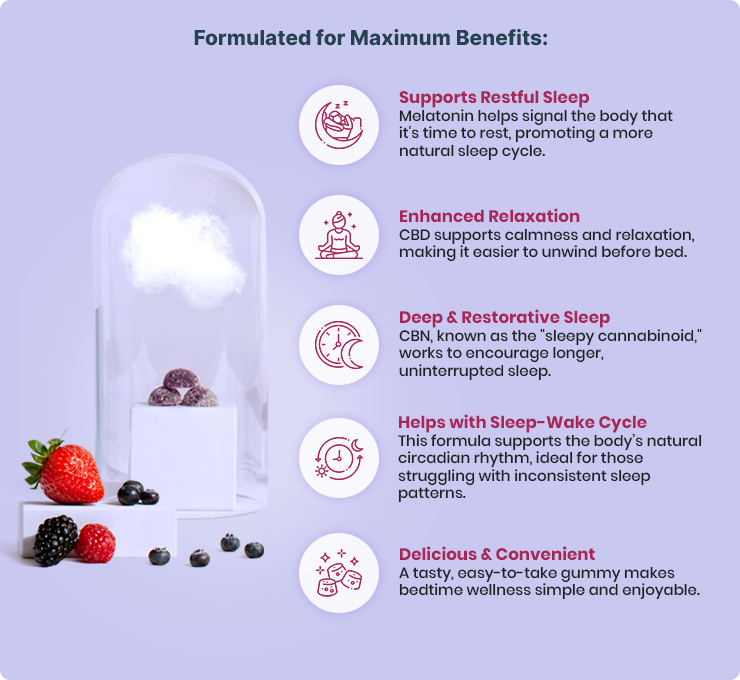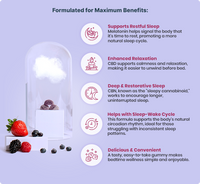Best Seller
- reduce stress stress
- improve sleep sleep
- Muscle & joint Muscle & joint
CBD Sleep Gummies (30mg CBD + 3mg CBN + 1mg THC)
-
Made for You
-
How It Works
-
Pure, Simple Ingredients
-
Lab-Tested for Quality & Potency
-
Perfect for Your Routine
-
The Joy Organics Guarantee
Best Seller
- Details
- Benefits
- Safety
- Ingredients
- Usage Tips

Excellent Customer Service

90-Day Guarantee

Carbon-Neutral Shipping
-
Made for You
-
How It Works
-
Pure, Simple Ingredients
-
Lab-Tested for Quality & Potency
-
Perfect for Your Routine
-
The Joy Organics Guarantee
Based on 167 reviews
 Reviews Summary
Reviews Summary- read all reviews
- WRITE A REVIEW


Dr Langdon is one of the more than 1000 healthcare professionals who use and recommend our products.

Other Great Choices
Best selling solutions to improve your daily life
What is CBN, and how does it support sleep?
Will these CBD gummies for sleep make me feel high?
What’s the difference between full spectrum and broad spectrum CBD gummies?
Why am I seeing a Prop 65 warning?
How do CBD Sleep Gummies compare to tinctures?
How long does it take to feel the effects of CBD Gummies for Sleep?
How long do the effects last?
Can I take these gummies with food?
Could these CBD gummies for sleep cause a positive drug test?
How do these gummies fit into a nighttime routine?
Are these CBD gummies for sleep habit-forming?
How many gummies come in a jar?
What’s the best way to store CBD gummies for sleep?
Why should I subscribe to CBD Sleep Gummies?
We have a team of highly trained CBD educators who can answer your questions and help you make an informed decision.
Monday - Friday: 8:00am - 5:00pm Mountain Time















 Reviews Summary
Reviews Summary


